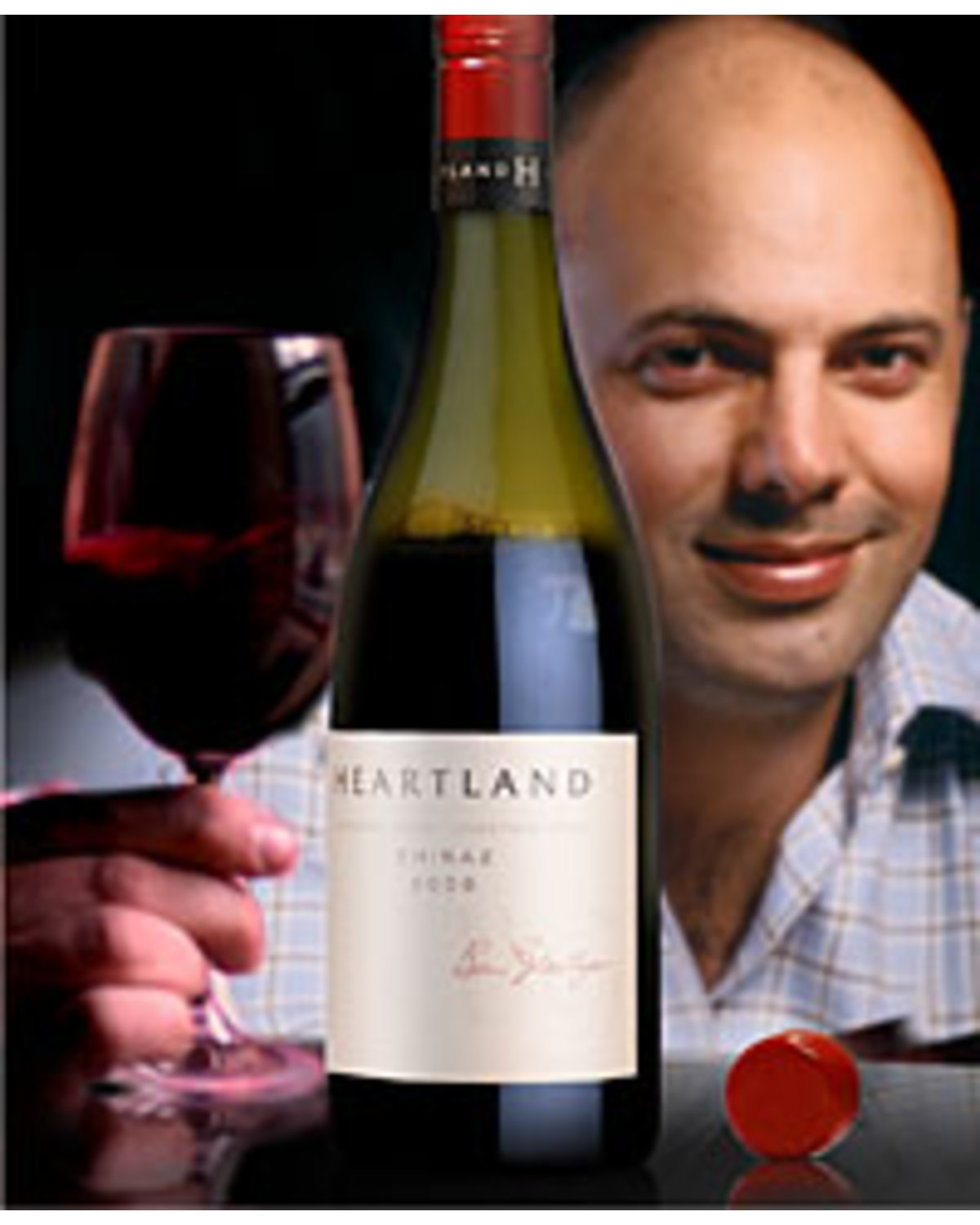
- 96
2008 Heartland Shiraz
There's an argument that people who have no knowledge of calendars are better off. They remain unaware of time prodding them through the passing of days into weeks and the weeks into months. Only at the end of a year do the rest of us find respite from time's merciless progression to reflect on the things that might have illuminated the last twelve months with a gleam of happiness, which of course, though hardly a condition of life, is something we've no doubt been pursuing in its various forms all year - be it through love, a good income and home, or perhaps a little overseas travel. When we've tired of these pursuits, or the monotony of our own nature sets in, wisdom tells us to turn to the pursuit of contentment instead. And when we seek contentment, we seek wine.
No one has ever complained of having grown tired of it. Its flavours endure as one of the most dignified of sensory pleasures. Almost everyone can recall a moment of astonishment at the incredible variety of flavours that wine offers, each varietal unfolding ever-new landscapes of interest. What flavours we personally prefer and why is a different matter altogether. Science informs us that our reflexive reactions to basic tastes (a preference for sweet, salty & umami tastes, and the rejection of sour and bitter tastes) are determined by our genes and their influence on the configuration of taste receptors. If you like brocoli but your friend finds it bitter it's because you have different genes which code for different bitter receptors. We can't change our genes, so some likes or dislikes can be difficult to alter.
However, age and environment also play a part and their contribution begins even before birth. During pregnancy, taste buds form in the infant in the seventh-week and the amniotic fluid acquires the odour of the food consumed by the mother, passing on information about her diet. In different cultures or dire environments, an uncertain food supply dictates what we put into our mouths. Such conditions made many primitive peoples almost omnivorous. We respond to such facts by imagining their desperation. However, anthropologists have learnt that some peoples actually developed a predilection for human flesh. Bodies were a staple of trade and funerals were largely unknown. In Tahiti, an old Polynesian chief explained his diet: 'The white man, when well roasted tastes like ripe banana' while the Fijians complained that the white man was too salty and tough, and that a European sailor was hardly fit to eat. Neither tribesmen or moderns are saved from time.
As we age our nutritional requirements change and our senses of smell and taste slowly decline. The pursuit of flavour heightens, and for many, wine takes on an ever-greater significance. This pursuit is something Australian winemakers have in common, few achieve it as consistently as Ben Glaetzer. Smelling and tasting the 2008 Heartland Shiraz will only serve to confirm that 'This is why we drink wine'.
Despite the challenging vintage conditions in 2008, winemaking maestro Ben Glaetzer has been able to orchestrate a superb Shiraz that delivers well beyond its price point.
Outstanding totally opaque black purple colour with black heart and deep crimson hue. Aromas of blackberry, spearmint, liquorice allsorts and confectionary – a top sniff. The palate boasts terrific weight and concentration for it’s price point. Generous, round and opulently textured, with flavours of ripe blackberry, plum, liquorice allsorts, confectionary and spice followed by a hint of mint. Well integrated velvet like tannins with long aftertaste of plummy liquorice allsorts, spice and black pepper. A fantastic effort by Ben Glaetzer.
Drink over the next 2-3 years.
14.5% Alc
